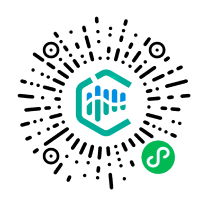

18983288589(微信同号)

18983288589(微信同号)

18908392210(微信同号)

18980413049


2017-06-07
/
指导原则
美国
现行有效
/
美国食品药品监督管理局(FDA)
GUIDANCE DOCUMENT
Additional copies are available from:
Office of Good Clinical Practice, Office of Special Medical Programs
Food and Drug Administration
WO Bldg. 32, Room 5172
10903 New Hampshire Avenue
Silver Spring, MD, 20993-0002
301-796-8340
gcp.questions@fda.hhs.gov
U.S. Department of Health and Human Services
Food and Drug Administration
Office of Good Clinical Practice, Office of Special Medical Programs
Revised June 2017
OMB Control No. 0910-0616
See additional PRA statement in Section IV of this guidance.
Form FDA 3674 - Certifications To Accompany Drug, Biological Product, and Device Applications/Submissions
Contains Nonbinding Recommendations
This guidance represents the current thinking of the Food and Drug Administration (FDA or Agency) on this topic. It does not establish any rights for any person and is not binding on FDA or the public. You can use an alternative approach if it satisfies the requirements of the applicable statutes and regulations. To discuss an alternative approach, contact the FDA office responsible for this guidance as listed above.
This guidance describes the Food and Drug Administration’s (FDA, we, or Agency) current thinking regarding the types of applications and submissions that sponsors, industry, researchers, and investigators submit to FDA with accompanying certifications (Form FDA 3674) under section 402(j)(5)(B) of the Public Health Service Act (PHS Act), 42 U.S.C. § 282(j)(5)(B). Section 402(j) of the PHS Act was added by Title VIII, Food and Drug Administration Amendments Act of 2007 (FDAAA) (Public Law 110-85).
FDA's guidance documents, including this guidance, do not establish legally enforceable rights or responsibilities. Instead, guidances describe FDA's current thinking on a topic and should be viewed only as recommendations, unless specific regulatory or statutory requirements are cited. The use of the word should in FDA guidances means that something is suggested or recommended, but not required.
Title VIII, FDAAA, amended the PHS Act by adding section 402(j), 42 U.S.C. § 282(j). The provisions require that additional information be submitted to the clinical trials data bank (www.ClinicalTrials.gov) operated by the National Institutes of Health (NIH)/National Library of Medicine (NLM), including expanded information on clinical trials and summary information regarding the results of clinical trials.
One provision, 42 U.S.C. § 282(j)(5)(B), section 402(j)(5)(B) of the PHS Act, requires that a certification accompany certain human drug, biological product, and device applications and submissions to FDA. The provision reads as follows:
(B) CERTIFICATION TO ACCOMPANY DRUG, BIOLOGICAL PRODUCT, AND DEVICE SUBMISSIONS.—At the time of submission of an application under section 505 of the Federal Food, Drug, and Cosmetic Act, section 515 of such Act, section 520(m) of such Act, or section 351 of this Act, or submission of a report under section 510(k) of such Act, such application or submission shall be accompanied by a certification that all applicable requirements of this subsection have been met. Where available, such certification shall include the appropriate National Clinical Trial control numbers.
The certification requirement went into effect on December 26, 2007. To assist sponsors, industry, researchers, and investigators in complying with the requirement, we created a certification form (Form FDA 3674) to be used to satisfy the certification requirement. The Form FDA 3674 can be obtained at: https://www.fda.gov/AboutFDA/ReportsManualsForms/Forms/default.htm
We received numerous inquiries asking whether various kinds of information and documents that sponsors, industry, researchers, and investigators submit to FDA must be accompanied by the certification (Form FDA 3674). We also have experience with the submission of certifications since the form was implemented in December 2007. This guidance provides FDA's current thinking, for purposes of continued implementation of Title VIII of FDAAA,[1] regarding specific types of applications and submissions submitted to FDA under section 505, 515, 520(m), or 510(k) of the Federal Food, Drug, and Cosmetic Act (the FD&C Act), or under section 351 of the PHS Act, and accompanying certifications described in section 402(j)(5)(B), 42 U.S.C § 282(j)(5)(B).
The purpose of Title VIII, FDAAA, is to provide a means for ensuring that the public has access to information about certain clinical trials.[2] Specifically, Title VIII is intended to provide a mechanism for the public to learn about certain clinical trials that are being conducted, as well as summary results information of those trials. In determining its current thinking on specific applications and submissions submitted under the statutory sections cited above and submission of accompanying certifications, FDA has focused on the role the certification plays in helping achieve the purposes of Title VIII, FDAAA.
One purpose of the certification is to require the submitter to confirm compliance with all applicable requirements of Title VIII, including applicable implementing regulations, e.g., the requirement to register applicable clinical trials.[3] Failure to submit a certification, knowingly submitting a false certification, failure to submit required clinical trial information, and submission of clinical trial information that is false or misleading are all prohibited acts under section 301(jj) of the FD&C Act (21 U.S.C. § 331(jj)).[4] Requiring a certification (Form FDA 3674) to accompany certain applications and submissions submitted to FDA is, therefore, one way of encouraging compliance with the provisions of the law and any applicable implementing regulations.
The certification (Form FDA 3674) also facilitates FDA’s exercise of its responsibilities under the law. For example, as stated previously, FDAAA created four prohibited acts relating to compliance with the requirements of Title VIII, including compliance with the requirement to submit a certification. The certification requirement is critical to our ability to determine whether the law has been complied with and whether an enforcement action is appropriate. In addition, section 402(j)(3)(F) of the PHS Act (42 U.S.C. § 282(j)(3)(F)) requires FDA to notify the Director of NIH of certain actions taken on applications and reports that were accompanied by a certification. The notification alerts NIH to the fact that the responsible party must submit summary results information for the trials within a certain period of time, thereby assisting NIH in the exercise of its responsibilities under Title VIII. The information provided in the certification form helps us assist NIH in "linking" information posted on FDA's website regarding certain FDA regulatory actions to specific applicable clinical trials included in the registry and results databases. This linking, using the information in Form FDA 3674, particularly the NCT (National Clinical Trial) number(s) required in the form, allows FDA to help the public more easily correlate various reports, medical reviews, advisories, health alerts, advisory committee actions, and other materials with specific applicable clinical trials registered with www.ClinicalTrials.gov and identified by the NCT number.
New drug applications (NDAs), supplemental NDAs, biologics license applications (BLAs), supplemental BLAs, abbreviated new drug applications (ANDAs), premarket approval applications (PMAs), PMA "panel track" supplements, humanitarian device exemptions (HDEs), and resubmissions of these, are all "applications" under their respective sections of the FD&C Act or the PHS Act. Similarly, 510(k)s are "submissions of a report" under that section of the FD&C Act. Thus, all of these specified applications and submissions fall within the plain language of the statutory provision. Additionally, these all represent the initiation of the regulatory review process through which clinical investigations supporting approval of a previously unapproved medical product are submitted to FDA for marketing approval of that product. Because amendments to pending applications, pending supplemental applications, or pending submissions of 510(k)s are not independently "applications" or "submissions of a report under 510(k)," such amendments need not be accompanied by a certification (Form FDA 3674).
We concluded that the statutory requirement to submit a certification also applies to investigational new drug applications (INDs) and the submissions of new protocols to INDs. INDs are authorized under § 505(i) of the FD&C Act (see also 21 C.F.R. § 312.3 (defining "IND" as "an investigational new drug application")). We also concluded that Form FDA 3674 must accompany the submission of a new clinical protocol to an IND as described in 21 CFR § 312.30(a). There are a number of different types of submissions to an IND that are referred to as "amendments" under FDA’s regulations, but these types of submissions are varied as to their purpose and the role they play in the regulatory process. One type of submission is that of a new protocol submitted to a pending IND. A new clinical protocol that is submitted to a pending IND, for a study not already included in an existing protocol, is the investigational stage analog to an efficacy supplement to an NDA or BLA for a new indication not already covered by the existing application. New protocols are referred to as amendments to INDs, and are submitted to existing INDs, as a matter of regulatory process. We could have required that new protocols filed with FDA be submitted to a new IND, but for administrative ease chose to have them submitted to the existing IND. In contrast, other types of amendments to pending INDs are more analogous to amendments to NDAs, BLAs, and PMAs; as such, consistent with our interpretation of the statute with regard to amendments to NDAs, BLAs, and PMAs, certifications (Form FDA 3674) need not be submitted with IND amendments other than submission of a new protocol to an existing IND.
FDA intends to exercise enforcement discretion with regard to submission of certifications with four categories of applications and submissions: 1) a supplement to an approved NDA, BLA, or PMA other than an efficacy supplement (for NDAs and BLAs) or a panel track supplement (for PMAs), 2) a supplement to an approved ANDA, 3) INDs that fall within the types of INDs described in section 561 of the FD&C Act (21 U.S.C. § 360bbb), and 4) submission of a 510(k) if that submission does not refer to, relate to, or include information on or from a clinical trial. FDA believes that, in contrast to the types of applications and submissions discussed above, the majority of supplements to approved NDAs, BLAs, and PMAs do not refer to, relate to, or include information on or from a clinical trial. Furthermore, even to the extent that, for example, a labeling supplement to an approved NDA may refer to, relate to, or include information on or from one or more clinical trials, those clinical trials in all likelihood were conducted under an IND, and therefore the sponsor would already have submitted a certification (Form FDA 3674) regarding those trials during the investigational phase. It would be repetitive and would serve little or no purpose to have a sponsor repeatedly certify to having complied with the requirements of Title VIII, FDAAA, including any applicable implementing regulations, with regard to the same clinical trial.
With regard to supplements to approved ANDAs, even when such supplements are intended to add an additional indication (such as when existing patents or exclusivities have expired), such supplements would not ordinarily refer to, relate to, or include information on or from any clinical trial other than those which were referenced or referred to in the original ANDA submission. Thus, as with non-efficacy supplements to approved NDAs and BLAs, and panel track supplements to approved PMAs, certification with a supplemental ANDA would be repetitive, and would serve little or no purpose with regard to ensuring that the requirements of Title VIII and any applicable implementing regulations had been met.
With regard to INDs that fall within the types of INDs described in section 561 of the FD&C Act (21 U.S.C. § 360bbb), for purposes of the certification and completing the Form FDA 3674, the clinical trials conducted under such INDs will not be considered an applicable drug clinical trial as defined in section 402(j)(1)(A)(iii) of the PHS Act (42 U.S.C. § 282(j)(1)(A)(iii)).[5] None of those trials will be subject to the individual registration and reporting requirements as set forth in Title VIII, FDAAA, or 42 CFR part 11. Because none of the clinical trials conducted under an IND of the type described in section 561 of the FD&C Act would be subject to the requirements of Title VIII, FDAAA, or 42 CFR part 11, since these are not considered applicable clinical trials, certification with regard to such clinical trials when submitting an IND for such a clinical trial would serve little or no purpose with regard to ensuring that the requirements of Title VIII or 42 CFR part 11 had been met.
Finally, with regard to 510(k)s, the majority of 510(k) submissions do not refer to, relate to, or include information on or from a clinical trial. Accordingly, FDA believes that certification with regard to 510(k) submissions that do not refer to, relate to, or include information on or from a clinical trial would serve little or no purpose with regard to ensuring that the requirements of Title VIII, FDAAA, or 42 CFR part 11, had been met.
Because FDA believes that the statutory purposes of Title VIII would not be furthered by the submission of certifications (Form FDA 3674) with these four categories of applications and submissions, we intend to exercise enforcement discretion regarding certification with these applications and submissions.
Based on these considerations and as described above, FDA recommends that a certification using Form FDA 3674 accompany the following types of applications and submissions:
Applications/Submissions (including Resubmissions)
IND
New Clinical Protocol Submitted to an IND
NDA
Efficacy Supplement to an Approved NDA
BLA
Efficacy Supplement to an Approved BLA
ANDA
PMA
PMA Panel Track Supplement
HDE
510(k) that refers to, relates to, or includes information on a clinical trial
This guidance refers to previously approved collections of information. These collections of information are subject to review by the Office of Management and Budget (OMB) under the Paperwork Reduction Act of 1995 (44 U.S.C. §§ 3501-3520). The collections of information have been approved under OMB Control No. 0910-0616.
1. In particular, the Agency’s discussion of "applications" and "submissions" in this guidance is not necessarily applicable to any other provision of law.
2. Since implementation of the Form FDA 3674, FDA has promulgated 21 CFR § 50.25(c), requiring a statement in certain informed consent documents concerning the submission of information to the databank at www,ClinicalTrials.gov. In addition, on September 21, 2016, NIH published a Final Rule implementing section 402(j) of the PHS Act (42 U.S.C. § 282(j)) (see, 42 CFR part 11). The Final Rule does not include provisions related to this FDA certification other than identifying potential enforcement penalties for failure to comply with section 402(j) of the PHS Act (42 U.S.C. § 282(j)) (see, 42 CFR 11.66).
3. "Applicable clinical trial" is defined at section 402(j)(1)(A)(i) of the PHS Act (42 U.S.C. § 282(j)(1)(A)(i)) and at 42 CFR 11.10. For additional information, visit http://prsinfo.clinicaltrials.gov.
4. See, also, 42 CFR 11.66 for legal consequences of failure to comply.
5. The definition of applicable clinical trial in 42 CFR 11.10 excludes expanded access under section 561 of the FD&C Act from the definition of an applicable clinical trial.
Submit comments on this guidance document electronically via docket ID: FDA-2013-S-0610 - Specific Electronic Submissions Intended For FDA's Dockets Management Staff (i.e., Citizen Petitions, Draft Proposed Guidance Documents, Variances, and other administrative record submissions)
If unable to submit comments online, please mail written comments to:
Dockets Management
Food and Drug Administration
5630 Fishers Lane, Rm 1061
Rockville, MD 20852
All comments should be identified with the title of the guidance.

Pharma CMC2024-10-15

摩熵医药(原药融云)2024-08-21
数屿医械2024-06-24
数屿医械2024-06-13
数屿医械2024-05-30
摩熵医药(原药融云)2024-05-27
药事纵横2024-02-28
药通社2023-12-26
摩熵医药(原药融云)2023-12-13
药通社2023-06-25
2024-11-15
2024-11-14
2024-11-01
2024-10-31
2024-10-30
2024-10-30
2024-10-30
2024-10-29
2024-10-28
2024-10-24
2024-10-24
2024-10-23
2024-10-23
2024-10-22
2024-10-21
2024-11-15
2024-11-14
2024-11-01
2024-10-31
2024-10-30
2024-10-24
2024-10-22
2024-10-21
2024-10-17
2024-10-17
2024-10-17
2024-10-17
2024-10-17
2024-10-16
2024-10-15
2024-11-14
2024-11-01
2024-10-31
2024-10-30
2024-10-30
2024-10-24
2024-10-22
2024-10-21
2024-10-17
2024-10-17
2024-10-17
2024-10-17
2024-10-17
2024-10-16
2024-10-15